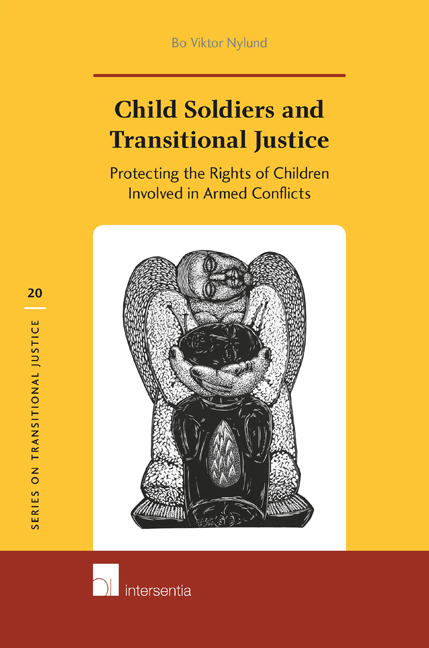 Child Soldiers and Transitional Justice
Child Soldiers and Transitional Justice Published online by Cambridge University Press: 12 December 2017
“I want to take my baby home. I want my parents to help me with him, but am not sure what will happen when I get home.”
INTRODUCTION
The criminal justice element of transitional justice is a call to punish leaders of previous regimes and individuals for their wrongdoing. Criminal justice is oft en what people immediately relate to when speaking of transitional justice. Prosecutions aim to ensure that those responsible for committing crimes are tried in accordance with international standards of fair trial and, where appropriate, punished for crimes carried out.
Key legal questions that are considered in chapter 3 include:
– Considering the current state of the art in turning the conscriptions (“forced”) and enlistment (“voluntary”) of children for use to participate actively in hostilities into an international crime, what are some of the implications of the recent Lubanga judgement?
– What is the role of criminal justice more broadly in bringing about change in the situation of children who are being conscripted and enlisted?
This chapter focuses on international criminal justice because it is the arena where the most detailed developments have taken place with respect to case law. International criminal justice from a post-conflict perspective has its roots in the Nuremberg trials, which brought about a substantial change in considerations of accountability, moving from collective to individual justice and from national to international processes. This was not to prioritize one method over another, but it was a new phenomenon at the time.
A critical aspect of criminal justice is the concept of the presumption of innocence and a crime having been committed “beyond reasonable doubt.” Criminal justice in any jurisdiction is not just about the rights of the victim, but also about the rights of the alleged perpetrator; hence, this chapter aims to carefully consider the different perspectives and prudently weigh the arguments. This is also why it is so important that criminal law is predictable and specific, and that those who are in place to implement that law are well prepared to do so.
To save this book to your Kindle, first ensure [email protected] is added to your Approved Personal Document E-mail List under your Personal Document Settings on the Manage Your Content and Devices page of your Amazon account. Then enter the ‘name’ part of your Kindle email address below. Find out more about saving to your Kindle.
Note you can select to save to either the @free.kindle.com or @kindle.com variations. ‘@free.kindle.com’ emails are free but can only be saved to your device when it is connected to wi-fi. ‘@kindle.com’ emails can be delivered even when you are not connected to wi-fi, but note that service fees apply.
Find out more about the Kindle Personal Document Service.
To save content items to your account, please confirm that you agree to abide by our usage policies. If this is the first time you use this feature, you will be asked to authorise Cambridge Core to connect with your account. Find out more about saving content to Dropbox.
To save content items to your account, please confirm that you agree to abide by our usage policies. If this is the first time you use this feature, you will be asked to authorise Cambridge Core to connect with your account. Find out more about saving content to Google Drive.